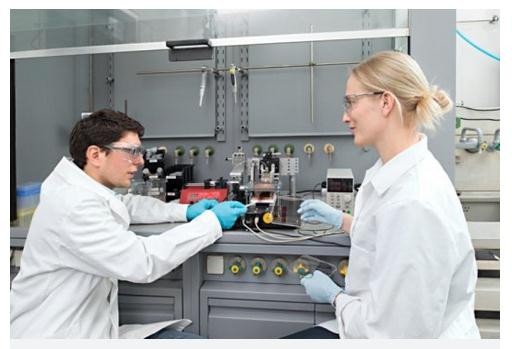X-Ray Technology Reveals the Internal Mechanism of Organic Solar Cells
Researchers at the Technical University of Munich used X-ray technology to observe the internal reactions of organic solar cells at the molecular level, which can be used to increase the conversion efficiency of solar cells.
Organic solar cells are composed of organic molecules and one of the key factors that restrict the battery's ability to obtain more energy is the arrangement of the molecules. So far, there has been no corresponding study on how molecules are arranged in the printing process, and in order to control the arrangement of the components in the battery, it is very necessary to study this problem from the molecular scale. The team's research found that at the beginning of printing, the solvent gradually volatilizes and other materials remain in the solution. This phenomenon directly leads to an increase in the concentration of organic molecules until the electron donor begins to crystallize. At the same time, the electron acceptor begins to polymerize. In this process, the distance between the two materials has been determined, which directly affects the efficiency of the battery. In order to increase the efficiency of the battery, it is necessary to control this step in the printing process.

Researchers will use existing results to control the arrangement of other materials so that they can be directly applied to industrial production and optimize the battery production process.
Breaking new records for double-junction solar cells
Recently, the National Renewable Energy Laboratory (NREL) of the U.S. Department of Energy and the researchers of the Swiss Center for Electronics and Microelectronics (CSEM) have jointly developed a dual-junction III-V/Si solar cell to convert decentralized sunlight into sunlight. Created a new record for the efficiency of electricity, reaching 29.8%.
This type of solar cell consists of two types of battery stacks, the upper part of which is a GaInP solar cell developed by NREL and the lower part is a crystalline silicon cell developed by CSEM using silicon heterojunction (SHJ) technology. . The key to this record is the design of the new double junction solar cell proposed by CSEM. The results of the first cooperation further demonstrate that higher efficiency can be achieved by combining NREL and CSEM solar cells.
Funding for this research work comes from the US Department of Energy Office’s SunShot program for energy efficiency and renewable energy (which aims to realize the cost advantages of solar versus conventional energy) and the Swiss Confederation and the nano-tera.ch program.
DIN985 Nylon Insert Hexagon Lock Nut
Chuangtuo Jinggong (Jiangsu) Co., LTD , https://www.chtofastener.com
